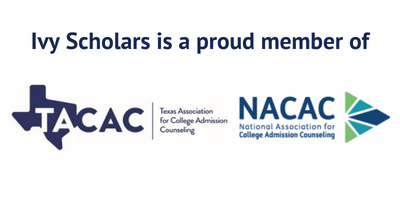When colleges review applications, they do so with a goal in mind. This goal transcends any individual applicant; admissions officers are trying to build a class of students, one which is greater than the sum of its parts. In doing so, the way they review individual applications can seem mystifying to outsiders, and creates much of the black box around admissions.
In this article we’ll explore what this process looks like, and how the concerns admissions officers have when creating a class impact individual applications. While we’ve discussed what admissions officers are looking for previously, this article will be more of an exploration of the process of admissions, from start to finish. We hope that this demystifies the process for you, and lets you better understand what your chances are for admission. Let’s get started!
How it Begins: The Early Round
While not all colleges offer multiple rounds of admissions, the most competitive schools do. Since these are the schools most students are interested in applying to, we think it’s good to include this in our discussion.
The early round of admissions allows admissions officers and colleges a degree of assurance, because any students let in via Early Decision are bound to attend the school. This means that in this round they will focus on fulfilling institutional priorities; students who they need to admit based on holes in their current student body.
Some of these are consistent; for instance recruited athletes are generally admitted in this round. Schools also look to shore up socio-economic diversity, admitting many students through Questbridge in the early round. Other priorities vary by college and year; they may need a new saxophonist for their band, they may be seeking to balance their gender ratio, or they may have other priorities they need to fulfill.
Top colleges generally admit between a third and a half of their entire class in the early round. Here’s how the review process itself works, step by step. Note that we are describing the general process for top universities, and that review processes differ at large public universities, which often have a smaller admissions staff.
The Initial Read
When admissions officers begin reviewing applications, they generally do so in pairs. This can be done simultaneously, with two admissions officers reading the application in tandem and discussing as they do. Other colleges have each admissions officer read and make notes on their own, first one and then the other, with their scores then compared.
The goal here is to eliminate any bias one admissions officer may have. While admissions officers are given regular bias and sensitivity training, all humans have some degree of innate bias, if only towards students who come from backgrounds and circumstances akin to their own. Two officers doing the read together eliminates outlier scores, and builds consensus.
As officers read, students are labeled either clear admit, clear deny, or on the edge. It is these edge cases where the most time is spent. Some universities have a policy of comprehensive review, where all applicants are brought in front of a full committee; for these the clear deny students are often “discussed” in less than a minute apiece. This may seem hasty, but when a university has tens of thousands of applications to review in a few short months, they need to prioritize somewhere.
Moving to Committee
Once the initial read is concluded, applications are read and reviewed by the full committee. These often confirm the conclusions reached by the initial readers, with clear rejections reviewed the fastest. The clear admits may take longer, as there still must be consensus, but these too often go quickly. It is the edge cases which take the most time.
In the early committee, there are fewer applications overall, which means each is discussed at more length. Students where the committee is unsure are more likely to be deferred, so they can be considered again in the full context of the admitted class. This is likely to happen if a student’s grades are a concern, as they want to see full winter grades before making a final decision.
Overall, the committee is much more selective in the early round, since with ED applications, every student who is admitted will attend the university (some students will end up deferring, but this is usually less than 1%). Thus there is a desire for certainty about each student. Overall, however, the early round is less stressful than the later rounds.
The Crunch: Regular Decision Reading
This is the busy season for admissions. While the initial process is the same as in the early round, there are many times more applications to consider. Thus, while two admissions officers do still review applications in the early round, it is much faster, especially for the students who are clear rejections.
Further, because of early rounds, there are significantly fewer seats available. This makes the competition for each far greater. We’ll go through the rounds of decision reading, and how the class is shaped.
The Initial Read
This proceeds similarly, but more students are pushed into the initial rejection quicker. More students will be admitted, because unlike in the early round admissions are not binding, and not all admitted students will attend. The number of spaces has decreased, however, and the number of applicants greatly increased, which means that more students will need to be rejected overall, and faster.
Again, it is the students on the cusp of admission who will take the most time. Students with specific tags will have their applications set aside as well, even if they were removed from consideration in the initial review. These are legacy students, development cases, and the children of faculty.
Committee Rounds
These proceed much as they did in the early round, but each case is reviewed quicker, as there is less time. More emphasis is placed on the initial notes admissions officers put on the file. The committee then shapes the initial class; this is a first pass, and is rough, but assigns who is in, and who is out (for now). This initial sort is generally rough; some students who are waitlisted here may still be moved to the admit pile, and many students who are tentatively admitted will get moved out of the class. This process is called shaping.

Shaping
This is the final round of the admissions process, and the hardest for admissions officers. Here the final shape of the admitted class is taking shape, and this generally means cutting some students who were tentatively admitted previously.
Schools use computer models to calculate yield; which is the number of admitted students who will attend. This then determines how many students the school should admit to actually have their desired freshman class size. Some schools review individual applications with software to calculate how likely a student is to attend, and whether merit aid may induce acceptance.
Schools also use shaping to make sure they have fully met institutional priorities. Are the average test scores of the incoming class high enough? Is there an equal ratio of men and women? Is there a good balance in the intended majors of incoming students? Does the class have a good level of racial, ethnic, and geographic diversity?
Admissions officers will do their best to fill these needs in the ED round, but shaping in the regular decision round allows them to smooth the edges of the incoming class. Admissions officers do not have quotas for racial diversity or by gender, but they do try to ensure that incoming classes are similar to the current makeup of the campus. This can lead to the impression that there are caps or quotas.
Note that students are not admitted or rejected individually for reasons of race or gender; instead students are examined in groups, and the admission or rejection of any of them does not impact on others, save in the context of the class as a whole.
Finally, near the end of the shaping process, specially tagged students have their applications reviewed an additional time, to see if there is room for them in the class. This mostly benefits legacies, development cases, and the children of faculty. While their acceptance is not guaranteed here, it is an additional chance they are given that most applicants are not.
Financial Considerations
Schools which are need aware will use the shaping period to make sure that they have enough money to give aid to all of the students who admit it. These schools often have a policy of only letting students in if they have enough aid dollars to support them, and this is determined in the shaping purpose. How each college does this varies. See our other article for a breakdown on need-blind vs need aware schools.
The Purpose of the Waitlist
Throughout the admissions process, applicants will be placed on the waitlist for various reasons. The overall purpose of the waitlist is yield management. Colleges use computer modeling to predict how many admitted students will enroll, but these are not 100% accurate. To ensure that they do not accidentally enroll too many students, universities will generally err on the cautious side.
The waitlist is a hedge against under enrollment then. If fewer students than anticipated decide to attend, the university will reach out to students on the waitlist to fill the gap. This does not mean that getting in off the waitlist is likely; we wrote an article which discusses your odds of getting accepted off the waitlist.
The waitlist does serve another purpose in admissions though, and that is to let some applicants down gently. Getting put on the waitlist instead of being rejected outright is a sign from admissions that you are qualified to attend the university, but they just don’t have enough room for all such students.
This is often used for tagged students, such as legacies or the children of faculty. By letting these students down more gently, universities seek to continue their relationship with these children’s families, and not sour relations.
Final Thoughts
Each admissions office operates independently, with their own standards, quirks, and traditions. That said, each is trying to do the same thing at their core: to admit the best students for their university. This article attempted to explain the general process by which a class is selected, and we hope that by doing so you can feel more surety in your college admissions chances.
Of course, knowing how your application will be reviewed is only part of the process; you also need to craft a stellar application. If you want help with that, or to hear our thoughts on your chances at top colleges, schedule a free consultation today. We have a depth of experience helping students with their applications, and are always happy to hear from you.








